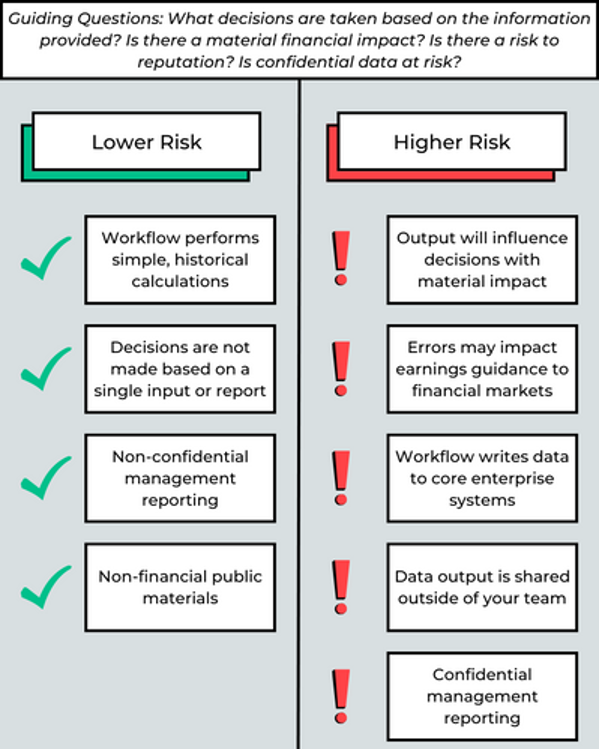2024 is here, but your coworker is not. They’re on a well-deserved two-week vacation, but three days in, the weekly report they’ve scheduled to go out completely breaks — and now you’re on the hook to fix it.
What can you do?
If there’s no governance in place, your guess is likely as good as anyone else’s. Having a governance strategy on your team is critical for avoiding costly mistakes and downtime, passing audits, and letting coworkers enjoy their time off. In this blog, we break down the importance of good governance and how you can improve it across your analytic workflows.
Why Governance Matters
Governance can mean many things to many people. So, perhaps let’s start by defining what business looks like without good governance practices in place.
In companies with no data governance, there’s a general lack of clarity and direction in your analytic processes because you don’t know which data is good and which is bad, and you’re constantly fighting fires across your analytic processes.
Busy work and uncertainty abound. Worse, managers or coworkers will come up and ask you questions that you can’t answer. This can become catastrophic if the person asking those questions is an auditor.
Another way to think about it is a seatbelt. You rarely need it when you drive, but when you do, it can save you from harm. Governance is the same. It protects you from your mistakes, can help you breeze through audits, and gives you confidence your analytic processes will work when you or your coworkers go on vacation.
Building a Governance Strategy
First and foremost, good governance requires a solid strategy accessible to everyone who needs it. It won’t do anyone any good if your governance strategy is a printed piece of paper in an unopened drawer. So, before getting into specific tactics, you’ll need to review your overarching plan. Your governance strategy should become second nature to everyone involved; it should be integrated into the very fabric of how you do business.
To accomplish this, you’ll need a strong center of enablement that includes the upskilling, training, and education necessary for your teammates to understand why good governance matters and how to go about it. One thing that can help with establishing this strategy and gaining buy-in is to have everyone think of themselves as a team.
A lot of people think governance is just a chore or a tax on all the fun analytics, but once you realize that you’re part of a team, you start to think about what happens if the person you’re sitting next to suddenly wins the lottery and leaves. You have to decide who’s going to be able to run that process. Good governance facilitates thinking about optimizing your team and processes.
After you have a solid strategy in place, it’s time to get into the specific tactics and guiding principles of good governance, such as proper documentation around your analytics, having independent reviewers pre-production, and so on. To determine your specific tactics, you’ll first need to assess the risk level of your analytic process.
Assessing Your Workflow Risk Level
The exact definition of what constitutes a low- vs. high-risk workflow will depend on your organization, but there are a few questions you can ask to assess your workflow’s risk level, such as: Will an error in this workflow result in a material financial impact or substantial reputation risk? Am I working with confidential and sensitive data (like patient records, client information, etc.)? And so on.
Assuming you have two risk tiers (high/low), the infographic below highlights the questions you can ask yourself to determine the risk rating of your analytic process.

Risk assessment questionnaire.
In many cases, it’s also useful to ask questions such as:
- In the face of unexpected staff turnover, how can we ensure that the workflow can be executed?
- How can we expedite new team members to step in and familiarize themselves with workflows and underlying logic?
- Do our policies and standards ensure data is correct, updated, and fit for purpose?
Once you’ve established the risk classification of your workflow, you can put together a governance “checklist.”
Assembling Your Tactical Toolkit
Your specific list of tactics can include things that are always required, tasks that are recommended, and then items specific to high-risk or low-risk workflows. While details will vary across industries, sectors, and use cases, some common guiding principles for good governance across these risk levels include:
- Lower-risk workflows: Elements of good governance for lower-risk workflows are detailed documentation, independent reviews, and a formal sign-off/approval process. Specifically, we consider it helpful to document the calculation logic (either in the workflow or in an independent document, like a desktop procedure), an independent review process (within the team or by an outsider), tracking manager sign-offs, and a change log with evidence of review. Some of our analytic professionals leverage customer-managed telemetry to generate views of data sources and outputs; others leverage third-party applications like the WAM tool.
- Higher-risk workflows: For higher-risk workflows, we recommend separate development and production environments with a formal process to promote production, a formal review process for existing workflows (depending on risk, either continuous monitoring or a routine cadence like re-validation 1x per year), having separate user ID’s for workflows (not IDs of individual developers), and control points with automated pass/fail triggers that stop execution if an error occurs.
Lastly, while governance requirements can vary, you should always try to make it easy for users to remember and facilitate compliance. To ensure that every user is aware of best practices, consider handing out a “governance summary” during the onboarding process (or enable users to print a “checklist” they can run through as they complete their workflow), much like the picture below. This will make it simple and easy for your team to follow best practices and avoid costly mistakes.

Core Elements of Good Governance
Protect Your Analytic Processes
If you’re following governance best practices and vetted governance checklists, your analytic processes will work — they’ll be robust and successful — and that’s going to lead to opportunities for promotion and you taking on additional high-value work. Far from a chore, good governance is a win-win — for you, your organization, and your coworker who just left for Tahiti. But to implement a good governance strategy, you’ll need a solid strategy and an arsenal of tactics. Once you have your governance best practices in place, your analytic processes — and your team — will be unstoppable.
